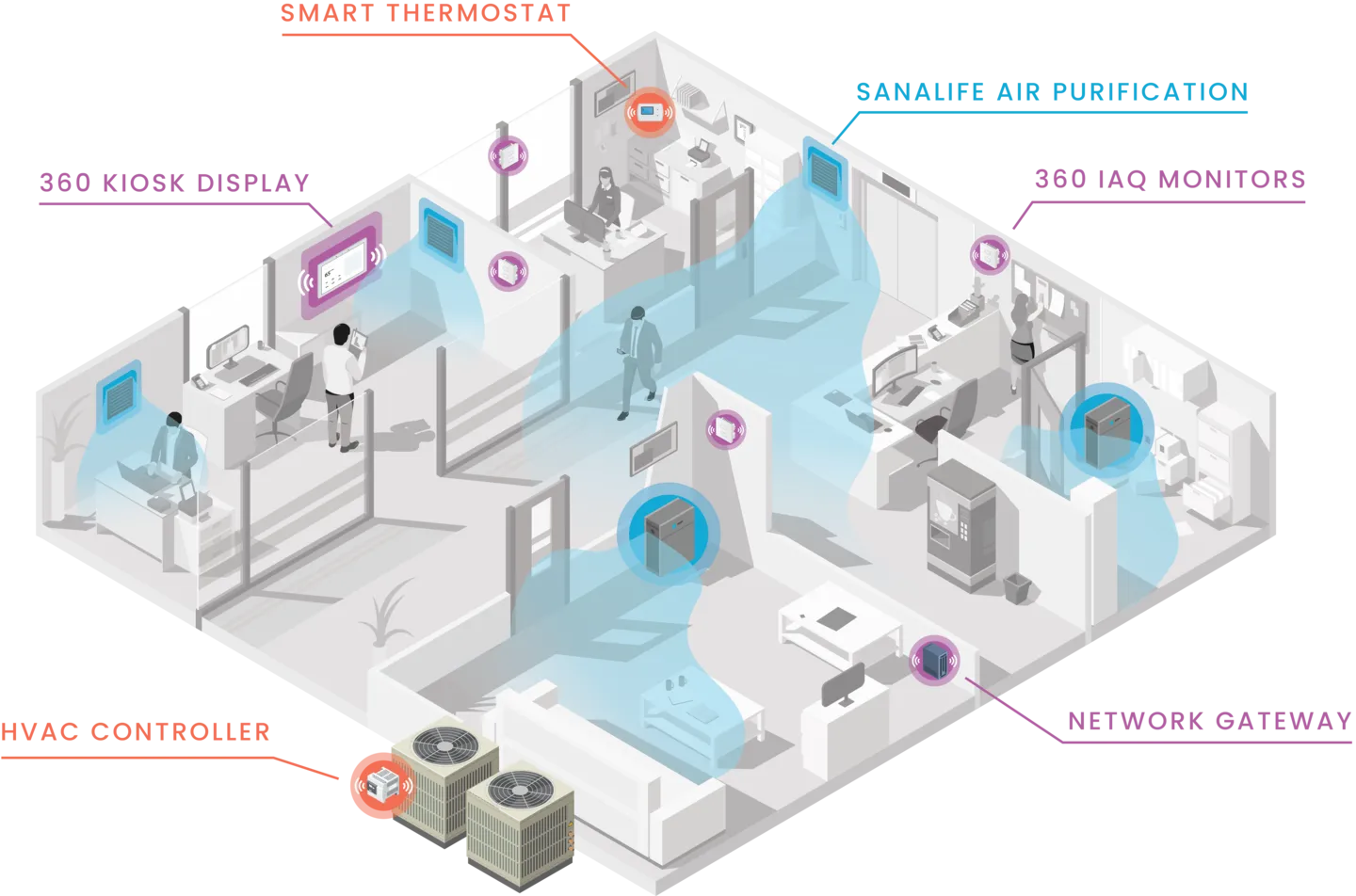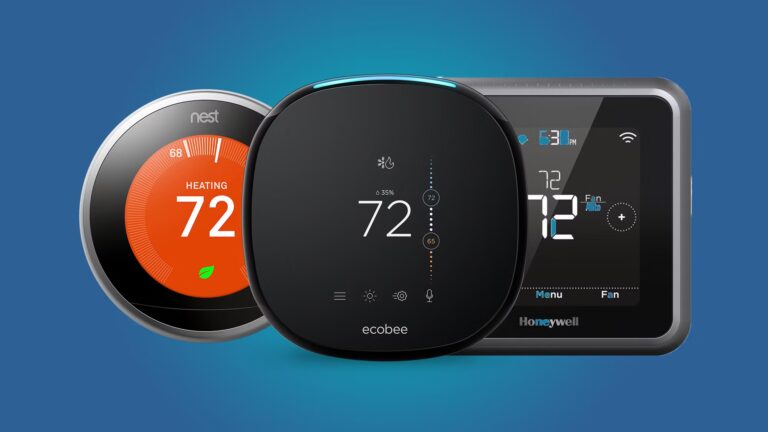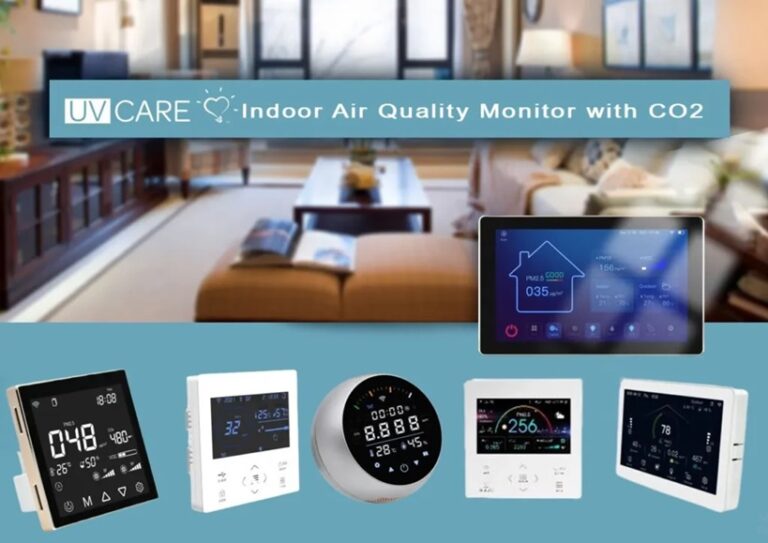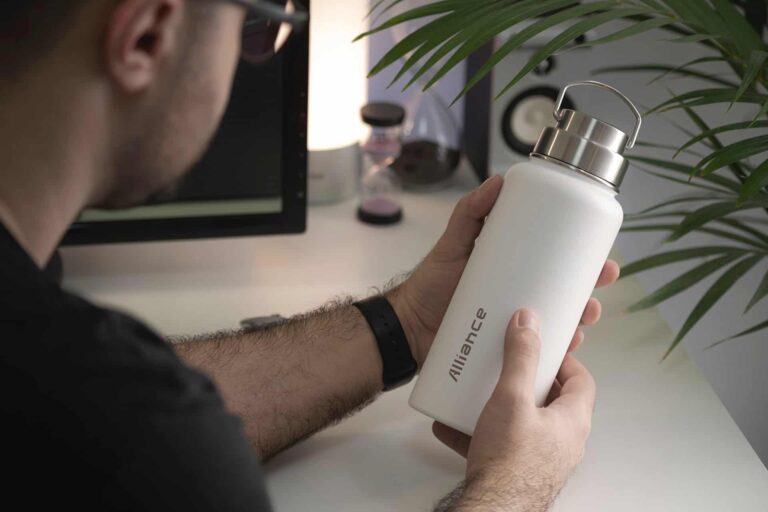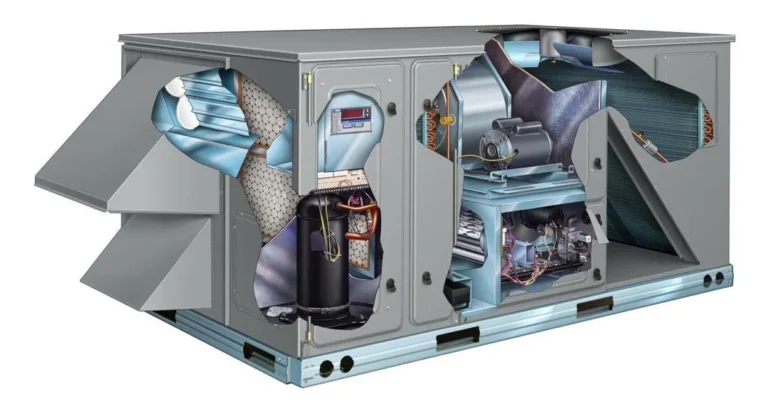Top 5 Indoor Air Quality Monitoring Systems for Office Buildings for 2026
Indoor Air Quality (IAQ) monitoring has become a must-have in modern office buildings, impacting everything from employee health to HVAC energy efficiency. In the U.S. commercial sector, facility managers and MEP contractors are seeking reliable, scalable IAQ systems that meet WELL, RESET Air, LEED and other standards. Below we rank the Top 5 commercial-grade IAQ monitoring systems for 2025/26, scoring each on six key criteria (1–10): Sensor Breadth & Accuracy; Certifications & Compliance; Smart Features & Dashboard; Deployment & Integration; Support & Reliability; and Value (capability-to-price ratio) – for a maximum of 60 points.
Each review includes a scorecard, key specs, pros/cons, and ideal use-case. We focus on enterprise-ready solutions (no low-end or purely residential gadgets) that offer the best mix of sensors, data analytics, BMS integration, and long-term support for U.S. offices. Let’s dive in!

🥇 Kaiterra Sensedge Series (Sensedge & Sensedge Go) – Modular Monitors for WELL/RESET
Sensor: 10/10 — Compliance: 10/10 — Features: 9/10 — Integration: 10/10 — Support: 9/10 — Value: 8/10 (Total: 56/60)
Key Specs:
- Monitors: Fine particulate (PM₂.₅/PM₁₀), CO₂, TVOCs, NO₂, temperature, humidity, light, sound, pressure, occupancy (optional modules for CO and O₃)learn.kaiterra.comkaiterra.com.
- Design: Sensedge (wired, wall-mounted display) and Sensedge Go (battery-powered, wireless) models with hot-swappable calibrated sensor cartridges for annual replacementlearn.kaiterra.com.
- Connectivity: Ethernet or Wi-Fi (wired units) with native BACnet (BTL certified) for direct BMS integrationlearn.kaiterra.comlearn.kaiterra.com; Sub-GHz wireless mesh (Go model) via a gateway (cellular/Ethernet) for long-range, off-network data transmissionlearn.kaiterra.comlearn.kaiterra.com.
- Power: PoE or 24V AC/DC (wired) and 8-year lithium battery (Go) using adaptive sampling to extend lifelearn.kaiterra.com.
- Platform: Kaiterra Cloud with web dashboard, WELL/RESET compliance reports, open API, and mobile alerts.
Pros:
- Comprehensive sensing: Covers all major IAQ parameters required by WELL/RESET (e.g. PM₂.₅, CO₂, VOC) and even factors like NO₂ and light/noise for holistic IEQ insightslearn.kaiterra.com. The modular design makes calibration as easy as swapping sensor packs instead of sending units to a lablearn.kaiterra.com.
- Top-tier compliance: RESET Air Grade B certified and listed in the Works with WELL catalogkaiterra.com, ensuring accuracy and data quality meet strict building standardssupport.kaiterra.com. This gives confidence when pursuing WELL or LEED credits.
- Seamless integration: One of the few monitors with native BACnet/IP support, allowing real-time data to feed into HVAC/BAS controls securelylearn.kaiterra.comlearn.kaiterra.com. This enables dynamic ventilation control and energy optimization based on IAQ.
- Flexible deployment: The new Sensedge Go model offers peel-and-stick installation – completely wireless with no cabling, ideal for retrofitslearn.kaiterra.com. Its battery lasts up to 8 years, drastically cutting maintenancelearn.kaiterra.com. (Wired Sensedge units are available for new builds that prefer direct power/BMS hookup.)
- Enterprise-grade platform: Rich cloud dashboard with alerts, trend analysis and compliance reporting. Portfolio management features let you oversee many devices across multiple buildings. Kaiterra’s platform and support are geared toward professional facility teams.
Cons:
- High upfront cost: Comes at a premium price – especially when outfitting large buildings – due to its commercial-grade sensors and enterprise features. Budget for ongoing costs too (annual sensor module replacements to maintain accuracykaiterra.com).
- Gateway needed for wireless model: Sensedge Go requires a separate gateway device for each network cluster, which is an added component (though one gateway can handle dozens of sensors).
- Complexity: Advanced capabilities mean a slight learning curve. Maximizing its value (e.g. integrating with HVAC controls or using the API) may require IT/BAS expertise. Smaller operations might not utilize all features.
Ideal Use-Case: Large office buildings or campuses pursuing WELL or RESET certification, and tech-forward facilities that demand high-precision IAQ data with BMS integration. Sensedge is perfect for scenarios where actionable air quality insight (and proving compliance) is a top priority – e.g. premium corporate offices, green buildings, or any project aiming for data-driven indoor air management.
➡ Links: Kaiterra Sensedge Go Product Page – Kaiterra (U.S.)
➡ Kaiterra Sensedge (Wired) Page – Kaiterra (U.S.)

🥈 uHoo Aura – All-in-One IAQ Monitor with Advanced Analytics
Sensor: 10/10 — Compliance: 9/10 — Features: 9/10 — Integration: 9/10 — Support: 8/10 — Value: 9/10 (Total: 54/60)
Key Specs:
- Monitors: Up to 13 indoor air parameters – including PM₂.₅ (and PM₁/PM₄/PM₁₀), CO₂, TVOCs, formaldehyde, carbon monoxide (CO), temperature, humidity, air pressure, light, and noisetestech-group.comtestech-group.com. Optional sensor modules for NO₂, O₃, or other targeted gases allow customization for specific needstestech-group.com.
- Design: Sleek tabletop or wall-mount unit (white cuboid). No built-in display (designed for cloud/app use), but supports external screen dashboards for public display of IAQ statustestech-group.com.
- Connectivity: Wi-Fi (2.4 GHz) cloud-connected. Ethernet connectivity available via a separate hub/adapter (if needed for IT security). Data syncs to uHoo’s secure cloud; integrators can use the REST API for pulling data into other systemstestech-group.com.
- Power: Mains powered via USB-C adapter (continuous monitoring). Internal backup battery is not listed – device should be on UPS if power backup is required.
- Platform: uHoo Business Dashboard (web & mobile app) with real-time monitoring, trends, and a proprietary “Virus Index” that assesses virus transmission risk from factors like CO₂ and humidity. Offers email/mobile alerts for threshold exceedances and insights to remediate air issues.
Pros:
- Unrivaled sensor breadth: The Aura covers virtually every IAQ metric you might want in an office – from common ones (CO₂, VOC, particulate) to uncommon pollutants like formaldehyde, ozone, and nitrogen dioxidetestech-group.comtestech-group.com. This makes it a one-stop solution for comprehensive air health analysis (great for environments concerned with chemical off-gassing or urban outdoor pollution ingress).
- RESET & WELL ready: RESET Air accredited (Grade B) and meets WELL v2 continuous monitoring requirementstestech-group.comtestech-group.com. The device’s accuracy has been vetted for commercial projects, so you can trust it to inform certification efforts. It also supports LEED and Fitwel credits for IAQtestech-group.com.
- Rich analytics & alerts: The dashboard is user-friendly and data-rich – providing historical trends, actionable insights, and a unique Virus Risk Index that synthesizes data (CO₂, humidity, etc.) into an easy score for infection risk management. Users get real-time alerts with tips (e.g. “CO₂ high – consider ventilating room”) to guide quick action.
- Easy integration and sharing: Open API access allows exporting data to any software or BMS, enabling smart building integrationstestech-group.com. You can also generate public-facing displays or widgets to show occupants live air quality status – a great feature for promoting occupant trust and wellness initiatives.
- Modular and upgradable: uHoo Aura is somewhat future-proof – as new needs arise, you can plug in different gas sensor modules (or swap them) instead of buying a new devicetestech-group.com. This modularity, plus over-the-air firmware updates, means the system can adapt to evolving IAQ standards or concerns.
Cons:
- Wi-Fi dependency: Each unit relies on a stable Wi-Fi network and cloud service. In stricter IT environments, additional steps may be needed to whitelist the device’s connectivity. (Ethernet or offline standalone use is not its strong suit out-of-box, though solutions exist.)
- No native BACnet/Modbus: Integration is cloud/API-based – there’s no direct BACnet support as with some competitors. Connecting to a local BMS will require middleware or cloud-to-BMS bridging, which could be a hurdle for some facilities.
- Smaller vendor: While uHoo has a growing global presence, it’s not as established in the U.S. as some industry giants. U.S. customers may have to rely on online support and regional distributors (which, to be fair, have been responsive). Ensure that firmware updates and calibration services are accessible for long-term use.
- Cost for full feature set: The Aura’s value is high given how much it monitors, but to truly get all 13 parameters, you might need to purchase additional sensor modules or higher-tier packages. Budget accordingly, as adding rare gas sensors (NO₂, etc.) ups the price. Also, a subscription fee may apply for the business dashboard after an initial period/license – check current pricing.
Ideal Use-Case: Tech-savvy workplaces, medical offices, or high-sensitivity environments (like labs or museums) where broad-spectrum IAQ insight is needed. uHoo Aura shines for companies that want to proactively manage air quality – for example, identifying pollution sources (e.g. formaldehyde from new furniture, or CO from a garage) and ensuring optimum indoor conditions. It’s also ideal for smart buildings aiming to leverage IAQ data for both health and operational decisions (e.g. dynamically adjusting ventilation when the “virus index” or CO₂ rises).
➡ Links: uHoo Aura – Product Details – uHoo (Commercial)
➡ uHoo Business Dashboard Overview – uHoo (Features for Business)
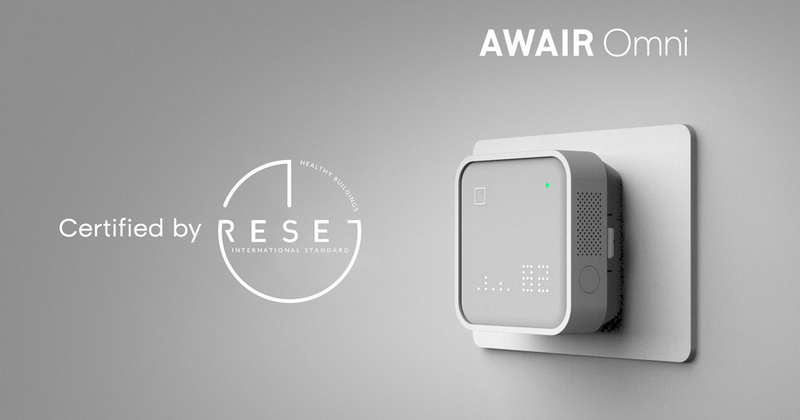
🥉 Awair Omni – Enterprise-Friendly IAQ Monitor for WELL Buildings
Sensor: 8/10 — Compliance: 8/10 — Features: 8/10 — Integration: 8/10 — Support: 9/10 — Value: 9/10 (Total: 50/60)
Key Specs:
- Monitors: 7 key factors – Temperature, Humidity, CO₂, Chemicals (TVOCs), Fine Dust (PM₂.₅), plus Ambient Light (illuminance) and Noise (dBA)getawair.comgetawair.com. These cover thermal comfort and the core IAQ pollutants linked to productivity and wellness (no direct particulate count beyond PM₂.₅).
- Design: Modern square device (approx 3.85” each side) with a touch-sensitive LED display that shows real-time air readings and an illuminated air quality “score” at a glancegetawair.com. Compact and neutral-looking, it blends into offices. An 8-hour backup battery keeps it running during short power outagesgetawair.com. Wall-mount bracket and even a stand are provided for flexible placement.
- Connectivity: Onboard Wi-Fi (2.4 GHz) for cloud connectivity and smartphone setup. Ethernet and LTE cellular connectivity are available via an optional Omni Gateway (a separate accessory that also powers the device via PoE or direct AC)getawair.comgetawair.com. The Omni can thus connect either through standard Wi-Fi or through a dedicated gateway for sites that prefer hardwired or cellular data paths.
- Power: USB-C power adapter included; the optional mounting bracket enables Power over Ethernet (PoE) or 7–36V hardwired power inputsgetawair.com – convenient for permanent installs. Has an internal battery for short-term backup use.
- Platform: Awair Dashboard (Enterprise) – a web platform and mobile app for real-time monitoring, historical trends, and multi-device management. Provides alerts and insights, and supports WELL certification tracking. Awair’s cloud API allows integration with third-party apps or building systems (some integrations and an SDK exist for custom solutions).
Pros:
- WELL-ready accuracy: The Omni was designed with WELL Building Standard in mind. Its sensors meet WELL v2 requirements for temperature, humidity, CO₂, VOC, and PM₂.₅ monitoringsupport.getawair.com. Many WELL-certified offices have successfully used Awair Omni to earn Air Concept points, so it’s a trusted choice to “check the boxes” for indoor air monitoring compliance.
- Elegant display & user experience: Unlike most pro IAQ devices, the Omni features a built-in display showing current readings and an overall air quality score. This is great for occupant engagement – you can literally mount it in a lobby or conference room to showcase air quality. The display and device itself have that clean, modern design Awair is known for. Meanwhile, the app/dashboard provide an easy UI for facility teams and even occupants (if you choose to share data).
- Flexible networking options: Awair Omni offers multiple connectivity paths out of the boxgetawair.com. Standard Wi-Fi is quick for most deployments; in larger enterprises or secure buildings, the PoE/Ethernet or cellular Omni Gateway is clutch – you can put the devices on a separate network or avoid Wi-Fi entirely. This flexibility simplifies deployment in IT-restricted corporate environments.
- Multiple power solutions: With PoE capability and a backup battery, Omni adapts to your power situation. PoE means you can run a single Ethernet cable for data and power – ideal for permanent installations with existing network drops. The backup battery provides continuity during power blips (ensuring no data gaps). Few competitors have as many power options bundled into one system.
- Proven and supported: Awair, a U.S.-based company, has been in the IAQ space for years. The Omni has a solid track record in offices, schools, and commercial spaces globally. You get responsive support, regular firmware updates, and a platform that has steadily improved with features like bulk device management, trend analytics, and integrations (e.g. Alexa, Google, and APIs for custom workflows).
Cons:
- Limited pollutant range: The Omni does not measure certain pollutants that some high-end systems do – for example, no CO sensor, no NO₂/O₃, no formaldehyde-specific sensor. It focuses on the common IAQ factors. For typical offices this is fine, but if you need those extra data points, you’d need a different system.
- Not RESET accredited: Unlike a few competitors, Awair Omni hasn’t undergone the RESET certification process (as of this writing). It can help in a RESET project, but officially it’s not listed as RESET Grade B. This is mostly a perception issue – its performance is still strong – but worth noting if your stakeholders prioritize having RESET-approved hardware.
- Cloud subscription for data history: The Awair Business dashboard provides basic functionality free, but extended data retention and advanced analytics may require a paid plan. For example, real-time monitoring is free, but to store and export historical data beyond a certain limit, you might need a premium subscription. Be sure to confirm the current plan details.
- Calibration maintenance: Out-of-the-box accuracy is good, but TVOC sensors can drift on any device – Awair provides a software routine for baseline calibration and even offers guidance on re-calibrating the VOC sensor after prolonged usesupport.getawair.com. There’s no swappable module system, so maintaining top accuracy might involve sending units for factory calibration every few years (especially for CO₂ or dust sensors). This is fairly standard, but a consideration for long-term ownership.
Ideal Use-Case: Corporate offices, coworking spaces, or educational facilities focused on occupant wellness and comfort. Awair Omni is ideal if you want a plug-and-play IAQ solution that satisfies WELL standards and provides an immediate feedback loop to occupants (via its display or app). It’s a great choice for workplace WELLness programs, HVAC optimization in office suites, or any scenario where you need a reliable “all-rounder” IAQ monitor that’s easy to deploy and visually reassuring.
➡ Links: Awair Omni – Official Page – Awair (Product info & purchase)
➡ Awair for Business – Awair (Enterprise dashboard & features)

4️⃣ Airthings for Business (Space Pro) – Wireless, Battery-Powered IAQ Network
Sensor: 9/10 — Compliance: 7/10 — Features: 9/10 — Integration: 8/10 — Support: 9/10 — Value: 10/10 (Total: 52/60)
Key Specs:
- Monitors: 10 indoor air metrics – including ultrafine particulate matter (PM₁) and PM₂.₅, carbon dioxide (CO₂), airborne chemicals (VOC), temperature, humidity, air pressure, light (illuminance), and noise (sound level)airthings.comairthings.com. (The Airthings Space Plus model swaps some sensors to include radon in lieu of certain othersairthings.com, whereas the Space Pro focuses on the broader environmental factors and excludes radon.) Both models also compute a derived “Virus Risk” index based on CO₂, humidity, and temperature to indicate the potential for viral spreadairthings.com.
- Design: A compact, battery-operated device (about 6.7” x 3.5”) with an e-ink display. The display can be customized to show parameters (e.g., CO₂ level or overall air quality status) and features a color indicator ring when you wave in front of itairthings.comairthings.com. It’s truly wireless – meant to be wall-mounted or placed anywhere without wiring. Clean, minimal aesthetic.
- Connectivity: Airthings SmartLink – a proprietary long-range RF (Sub-GHz) that connects all Airthings sensors to a central hub (the Space Hub) up to ~100–~300 feet indoors. This means no on-site Wi-Fi needed for the sensorsairthings.com. The hub itself uploads data via Ethernet or cellular (3G/4G) to the Airthings Cloud. Sensors also have Bluetooth for initial setup or local readout via mobile app, but regular data goes through the Hub.
- Power: Battery powered – uses 6 × AA batteries, with up to 4-year battery life under default sampling intervalsairthings.com. Alternatively, it can be USB-C powered if you prefer not to use batteries (or for locations with very frequent measurements). This flexibility allows totally cable-free installs, or continuous external power for faster sampling intervals.
- Platform: Airthings for Business Dashboard (cloud) and mobile app. Live data, alerts, and reporting for multiple rooms/buildings. The system integrates with Airthings’ REST API so data can be pulled into other software or BMS. It also offers integrations for BACnet/IP and MODBUS via third-party gateways (or the API) if needed. Admins can manage device fleets, set thresholds (e.g., CO₂ ppm for crowded spaces), and receive notifications.
Pros:
- Dead-simple deployment: Airthings sensors are truly wireless. You can deploy dozens of monitors across an office building in minutes – stick them on walls or ceilings and they connect automatically to the Hub (no local IT network config on each). No power cables, no Wi-Fi setup on each deviceairthings.comairthings.com. This is a huge time-saver for retrofitting IAQ across an existing building or scaling to multiple sites.
- Scalable network: The long-range wireless is robust in commercial buildings (sub-GHz penetrates walls well). One Space Hub can support up to 30+ Airthings devices and even has cellular backhaul, making it independent of corporate LAN. This IoT-style architecture is ideal for multi-floor deployments and for rolling out IAQ monitoring across portfolios (e.g. dozens of offices or schools) with centralized cloud managementairthings.comairthings.com.
- Maintenance-free operation: With multi-year battery life, you don’t need to frequently service the devices. Four years on AAs is industry-leading, thanks to clever power management and adaptive sampling. The devices also receive OTA firmware updates for improvements over time. All this translates to very low ongoing maintenance – an attractive value proposition for resource-strapped facility teams.
- Comprehensive data for the price: Despite being affordable, Airthings Space Pro covers an impressive range of IAQ aspects: you get particulate levels, CO₂, VOCs, and even ambient light and sound (which can indicate occupancy or comfort issues)airthings.comairthings.com. Few systems in this price class offer pressure readings (useful for building pressure management) or have a radon option (Space Plus). It’s essentially a multi-sensor Swiss Army knife for IAQ.
- User-friendly and integration-ready: The dashboard is clean and focused on actionable info – color-coded status, trends, and even suggestions for optimizing ventilation vs. energy (Airthings often emphasizes balancing health & energy). For integration, the API is well-documentedairthings.com, enabling custom integrations (e.g., hooking into a building’s existing analytics platform). Some users have also set up IFTTT or automation rules using Airthings data to trigger HVAC adjustments. There’s also a dedicated mobile app for on-the-go checks or even allowing occupants to see their area’s air quality if desired.
Cons:
- Not a lab-grade device: Airthings strikes a balance between consumer and professional. While accuracy is good (CO₂ is NDIR, PM sensor is laser-based, etc.), it might not be as pinpoint as higher-end monitors. It’s more than sufficient for managing indoor air, but for research-level precision, other devices (like TSI) have an edge. That said, Airthings devices have been validated to perform well within typical IAQ ranges (e.g., ±30 ppm for CO₂, etc.).
- Lacks some specific sensors: The system does not measure formaldehyde, NO₂, ozone, or SO₂. If those are concerns (typically in specialized environments), you’d need a complementary monitor. Also, no direct occupancy or people-count sensor – though it uses CO₂ and noise as proxies for occupancy and even computes ventilation rates indirectly.
- Reliance on hub/cloud: The sensors can’t function standalone; you must use the Hub and cloud. This introduces a single point of failure – if the Hub goes offline, data collection stops until it’s back (the sensors do have some onboard memory, but primarily rely on continuous connection). Also, access to data is through the cloud; if you need on-premises data control, this could be a drawback (however, the API can pull data for local storage if required).
- Compliance and certification: Airthings is relatively new in the commercial arena, so they don’t yet boast RESET or UL 2905 IAQ certifications on the device (though they do have relevant safety/FCC certs). Some enterprise clients might prefer devices with official third-party accuracy validation. Airthings did get a UL verified mark for their virus risk indicator and overall system in late 2023, and they work closely with air labs for validation, but perception-wise it’s not as “certified” as some competitors in marketing terms.
- Data granularity vs. battery: To achieve long battery life, Airthings devices sample at intervals (e.g., every 5 minutes default). You can configure faster sampling, but that will reduce battery life. For most applications 5-min (or even 10-min) data is fine, but those expecting high-frequency real-time graphs (say every few seconds) might find the update rate a bit slow compared to wired devices.
Ideal Use-Case: Workplaces, schools, or retail buildings that need a cost-effective, rapidly deployable IAQ monitoring solution across many rooms or multiple sites. Airthings is perfect for facility managers who want to instrument entire buildings (or portfolios) with minimal installation effort – for example, monitoring every classroom in a school district, or all meeting rooms in an office, to ensure healthy conditions. It’s also great for scenarios where running new wires is impractical and a battery-powered solution is the only feasible route.
➡ Links: Airthings Space Pro (View Plus) Product Page – Airthings (Tech specs and features)
➡ Airthings for Business – Solution Overview – Airthings (How the system works)
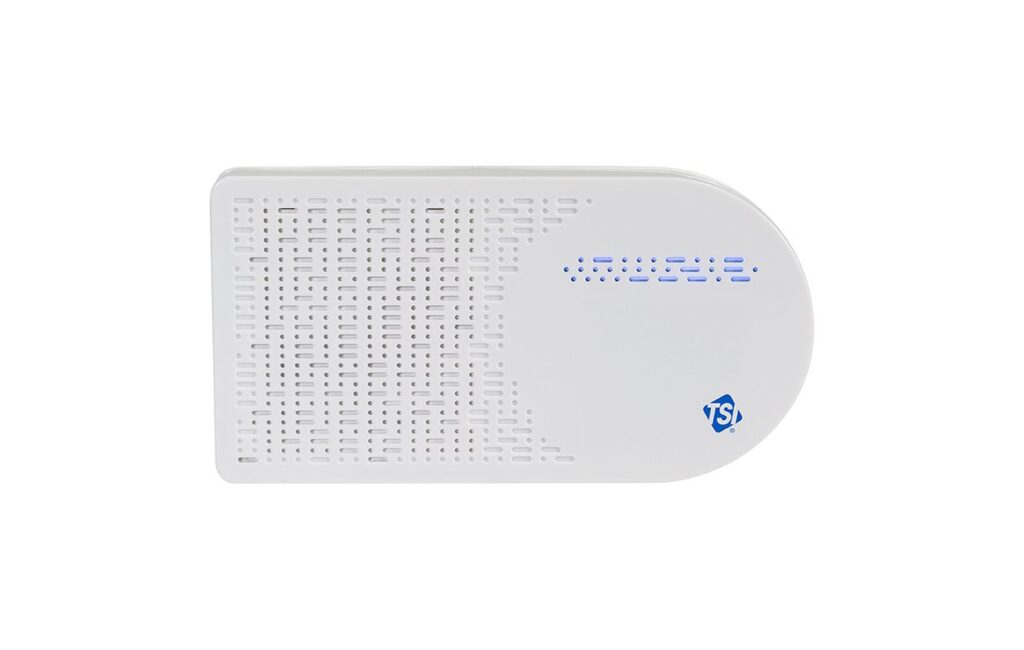
5️⃣ TSI AirAssure 8144-6 – High-Accuracy Monitor for Comprehensive IAQ
Sensor: 10/10 — Compliance: 8/10 — Features: 8/10 — Integration: 7/10 — Support: 10/10 — Value: 6/10 (Total: 49/60)
Key Specs:
- Monitors: Up to 12 parameters covering a broad spectrum of IAQ and pollutants. The flagship 8144-6 model includes sensors for: CO₂, TVOC, particulates (PM), and six specific gases – carbon monoxide (CO), nitrogen dioxide (NO₂), ozone (O₃), sulfur dioxide (SO₂), plus standard temperature, relative humidity and barometric pressuretsi.com. (Smaller variants 8144-2 and 8144-4 have a reduced selection of gas sensors.) This wide array addresses both typical indoor pollutants and those that enter from outdoor pollution or combustion sources.
- Design: A wall-mount unit (about 8” × 5” × 2”) with a durable industrial look. It has an on-device status LED and an SD card slot for local data storage. No real-time numeric display on the device – it’s meant to be used with the software dashboard for readings. Installation is straightforward (<10 minutes) with a mounting kit includedtsi.comtsi.com.
- Connectivity: Built-in Wi-Fi (802.11 b/g/n) radio for cloud connectivitytsi.com. Ethernet is not built-in, but a separate accessory or converter can be used if needed. Data streams to TSI’s cloud platform (TSI Link); the monitor can also buffer data on the included 32 GB microSD card as backuptsi.com. TSI Link includes a web API, so integration with other systems is possible through cloud queries. No native BACnet or analog output – this is primarily a cloud IoT device, despite being from a scientific instruments company.
- Power: Powered by wall outlet (100–240V AC to 12V DC adapter included) or can be wired to 24 VAC building power using the terminal connector providedtsi.com. No battery operation (continuous power ensures high-frequency sampling for accuracy). Consumes modest power, but if using many units, ensure outlets or 24V supply are available.
- Platform: TSI Link™ cloud software – offering real-time device readings, configurable dashboards, data analysis and reporting tools. Users can manage multiple AirAssure units across sites, set up custom alerts (e.g., text/email when CO or any metric exceeds a threshold)tsi.com, and even publish a data view publicly if desired. The platform is accessible via browser and has an associated mobile app for quick checks. Purchase of the device typically includes 1–3 years of TSI Link Premium access (subscription may be required afterward)tsi.com.
Pros:
- Scientific-grade sensing: TSI is known for laboratory-grade instruments, and the AirAssure brings that pedigree. You get very high accuracy sensors, especially for gases like NO₂, O₃, and SO₂ which are not typically found in IAQ monitors. This is ideal for locations where outdoor pollution significantly impacts indoor air (e.g., offices in busy urban centers) or where precise measurements are needed for research or compliance. In short, it’s one of the most comprehensive and precise IAQ monitors available in the commercial markettsi.com.
- Comprehensive pollutant coverage: AirAssure can serve as an all-in-one monitoring station that might otherwise require multiple devices. For instance, it can simultaneously track traffic-related pollutants (NO₂, CO), smog ozone, and indoor VOCs – giving you a full picture of chemical contaminants. If your building has any indoor combustion (furnaces, labs, kitchens) or is near a highway/industrial area, this device captures those pollutants where others might leave you blind.
- Robust cloud dashboard: The TSI Link interface provides an engineer-friendly dashboard with the ability to analyze data in real time, overlay trends, and generate reports for stakeholders. You can easily manage fleets of monitors remotely (push settings, firmware updates, etc.) and organize them by building or zonetsi.com. The alerting function is quite powerful – you can set precise trigger conditions (for example, send an email if PM₂.₅ stays above 35 µg/m³ for more than 5 minutes, or if CO spikes above 5 ppm in any monitored mechanical room). This helps in proactive IAQ management.
- Enterprise support & reliability: Backed by TSI’s decades of experience, the AirAssure comes with strong customer support, calibration services, and a warranty that you’d expect from a professional instrument. The device is built to run continuously; having options like 24 VAC power integration shows it’s meant for serious installations. Many healthcare and government clients use TSI IAQ devices, which speaks to their trustworthiness. In short, you’re investing in a solution that’s likely to perform reliably for many years, long after cheaper gadgets fail.
- Included data services: TSI includes up to 3 years of cloud service in the purchasetsi.com, which is a nice value add (some competitors make you subscribe immediately). This means no additional cost to get the full functionality (at least for the included period). Additionally, the microSD local storage means you have a fail-safe – if connectivity is lost, the data isn’t lost (it can sync later or be manually retrieved), ensuring continuous data logging.
Cons:
- Premium cost: The AirAssure 8144-6 is the most expensive unit on this list. With its lab-grade capabilities, the price can be several times higher than more basic IAQ monitors. For many typical office applications, it could be hard to justify this cost-benefit ratio if you don’t explicitly need the advanced gas monitoring. Also, after the included cloud period, ongoing TSI Link service has a subscription fee (to maintain data access, alerts, etc.), adding to lifecycle cost.
- Not focused on WELL/RESET specifically: While it certainly can help in those certifications, TSI’s device isn’t explicitly marketed with WELL or RESET checklists in mind. It lacks a couple of WELL parameters (no direct light or acoustic comfort monitoring, though those are minor). Also, without being listed in RESET’s directory or WELL’s catalog, you might have to provide extra documentation to assessors about its specs. It’s accurate enough to meet any standard – just not a common choice for those programs due to cost and overkill.
- Cloud-only integration: There’s no native BACnet or local integration pathway provided. Facilities that prefer on-premise data pipelines or integration with, say, Johnson Controls or Trane BAS, will have to bridge via the cloud API. This is a bit ironic given TSI’s HVAC industry ties – one might expect at least a Modbus or analog output option, but the AirAssure line is firmly an IoT cloud device. So, if you must feed data into a local control loop for dynamic HVAC control, it’s not straightforward here (possible via API and a middleware, but not plug-and-play).
- Setup and calibration complexity: The initial setup (configuring Wi-Fi, etc.) is fairly simple through a mobile app, but calibrating/replacing sensors after a year or two will require purchasing sensor cartridges or sending units for factory calibration. The VOC, NO₂, O₃ sensors etc., have finite life. TSI sells replacement sensor modules, which is good for user-maintenance, but swapping them isn’t as plug-and-play as Kaiterra’s cartridges (some disassembly is needed). Also, because it’s so sensitive, the device might need more careful placement (away from direct sources, high airflow, etc., to avoid skewing readings).
- Aesthetics and noise: Minor point – the AirAssure is more utilitarian in appearance. In a high-end office space, you might not want this visible in every conference room (it looks like technical equipment). Additionally, active sampling for gases involves internal micro-pumps or fans; the unit might emit a very faint hum. It’s usually negligible, but in a silent boardroom one could notice it. Most installations put these in hallways or unobtrusive locations, which mitigates this concern.
Ideal Use-Case: Critical environments and advanced IAQ programs. The AirAssure 8144-6 is ideal for healthcare facilities (hospitals, labs), government or university buildings participating in research studies, or any office in an area with known air quality challenges (e.g., near factories or highways) that wants to closely monitor specific pollutants. It’s also suited for organizations with aggressive ESG goals that want the best data possible to drive air quality improvements. If your project has the budget and demands “no-compromise” monitoring – for instance, a tech company HQ that wants to showcase the cleanest air or a medical campus monitoring environmental quality – TSI AirAssure is a top choice.
➡ Links: TSI AirAssure 8144-6 Product Page – TSI Inc. (Full specs and brochure)
➡ TSI Link Cloud Dashboard Info – TSI Inc. (Platform features and screenshots)
📊 Full Comparison Table
Below is a side-by-side comparison of the five IAQ systems across our scoring criteria:
| IAQ System | Sensors (Breadth & Accuracy) | Certifications & Compliance | Smart Features & Dashboard | Deployment & Integration | Support & Reliability | Value (Price Ratio) | Total Score |
| 🥇 Kaiterra Sensedge (Go) | 10 – Monitors PM₂.₅, CO₂, TVOC, NO₂, etc. with swappable modules; very high accuracylearn.kaiterra.comsupport.kaiterra.com | 10 – RESET✅ (Grade B), WELL✅; BTL BACnet certified for BMSlearn.kaiterra.comsupport.kaiterra.com | 9 – Rich cloud app, compliance reports, alerts (no mobile app deficiencies) | 10 – Wired PoE + BACnet; Wireless 8-yr battery model for retrofitslearn.kaiterra.comlearn.kaiterra.com | 9 – Specialized IAQ company with global support; reliable hardware | 8 – High upfront cost but huge capability; modular upkeep cost | 56/60 |
| 🥈 uHoo Aura | 10 – Monitors 13 factors (incl. formaldehyde, CO, NO₂, O₃) at Grade B accuracytestech-group.comtestech-group.com | 9 – RESET✅ (Grade B), WELL✅; meets all IAQ standards (no Bacnet)testech-group.comtestech-group.com | 9 – Dashboard with Virus Index, tips, alerts; open API | 9 – Wi-Fi cloud; API for integration (no native BMS protocol)testech-group.com | 8 – Growing company, decent support; not U.S.-based (online support) | 9 – Excellent value given sensor range; mid-tier pricing | 54/60 |
| 🥉 Awair Omni | 8 – Monitors 5 IAQ (PM₂.₅, CO₂, VOC, T, RH) + light & noise; good accuracygetawair.comgetawair.com | 8 – WELL✅ used in many projectssupport.getawair.com; not RESET certified | 8 – User-friendly app, web dashboard, on-device AQI display | 8 – Wi-Fi/Ethernet/LTE via gateway; API available (no Bacnet)getawair.com | 9 – Established U.S. brand; proven in field; 8-hr battery backupgetawair.com | 9 – ~$400 per unit; strong ROI for typical office monitoring | 50/60 |
| 4️⃣ Airthings Space Pro | 9 – Monitors PM₁/PM₂.₅, CO₂, VOC, T, RH, pressure, light, noise; radon in other modelairthings.comairthings.com | 7 – No formal WELL/RESET cert (has UL/industry validations) | 9 – Cloud dashboard, mobile app, “virus risk” metric, API | 8 – Fully wireless IoT (battery + hub); cloud API; (BACnet via third-party)airthings.comairthings.com | 9 – Reputable company (global); dedicated U.S. support team | 10 – $$ per sensor is low; minimal install and maintenance costs | 52/60 |
| 5️⃣ TSI AirAssure 8144-6 | 10 – Monitors PM and 6 gases (CO, NO₂, O₃, SO₂, etc.) with lab-grade precisiontsi.com | 8 – No WELL/RESET badge but exceeds their requirements; scientific-grade | 8 – TSI Link cloud w/ real-time analytics, custom alertstsi.com | 7 – Wi-Fi to cloud; API integration only; 24VAC power integrationtsi.comtsi.com | 10 – TSI = industry leader; robust calibration & long-term reliability | 6 – $$$$ unit cost; subscription after included period; overkill for some | 49/60 |
Scoring Legend: Sensors = quantity and accuracy of pollutants measured. Compliance = certifications, standards met (WELL, RESET, etc.). Features = quality of software, data analysis, and alerts. Integration = ease of install plus BMS/API integration. Support = vendor reputation, support, longevity. Value = overall bang for the buck for commercial use.
🧭 Which IAQ System Should You Choose?
Choosing the right IAQ monitoring system depends on your building’s priorities and budget. Here’s a quick guide:
- For WELL/RESET projects or data-driven smart buildings: Go with Kaiterra Sensedge. Its proven compliance, BACnet integration, and modular sensors make it ideal for high-performance green buildings that need actionable IAQ data in the BMSlearn.kaiterra.comsupport.kaiterra.com. It’s an investment, but it covers all the bases for serious air quality management in Class A office spaces.
- For broad-spectrum pollutant coverage: Choose uHoo Aura. It monitors the widest range of pollutants (including things like formaldehyde and ozone) – perfect for environments with diverse IAQ concerns or nearby outdoor pollutiontestech-group.comtestech-group.com. If you’re an engineering firm, lab, or urban office wanting to track everything in one device (and leverage a slick dashboard), uHoo delivers huge insight for the price.
- For occupant wellness and ease of use: Awair Omni is a great fit. It’s simple to deploy and user-friendly, with a display that can reassure employees of the air quality. Omni hits the sweet spot for most offices: it tracks the key metrics that affect comfort and productivity, and it’s popular in WELL-certified workplacessupport.getawair.com. Use Awair if you want a trusted, hassle-free solution to maintain a healthy office atmosphere (and show that you care, literally on the device’s screen).
- For large-scale or multi-site deployments: Airthings for Business is unbeatable. Its wire-free, battery-powered sensors allow you to outfit every room on every floor without pulling a single cableairthings.comairthings.com. If you manage schools, franchises, or multiple office locations, Airthings offers an affordable, scalable way to get eyes on IAQ everywhere – and the cloud dashboard brings it all together. It’s also ideal if you need radon monitoring in addition to standard IAQ (unique in this group).
- For specialized and critical monitoring: TSI AirAssure is your choice. It’s the priciest option, but in return you get reference-grade data on pollutants no one else measures in real-timetsi.com. Consider this for hospitals, laboratories, or facilities in high-pollution areas where knowing the precise levels of NO₂ or ozone is mission-critical. It’s also a strong choice for research collaborations or pilot projects aimed at deeply understanding indoor air chemistry.
In summary, all these top-ranked systems will improve your office’s IAQ insight – but each has its niche. Evaluate your specific needs: compliance vs. breadth vs. scalability vs. budget. Often, the decision comes down to striking the right balance. For many typical offices, a mid-range solution like Awair or Airthings will hit the mark. For cutting-edge smart buildings, Kaiterra or uHoo provide extra capabilities that can future-proof your IAQ strategy. And if you refuse to compromise on data, TSI stands ready (at a cost).
No matter which you choose, committing to continuous IAQ monitoring is a smart move for 2025 and beyond – ensuring healthier, more productive spaces and enabling proactive building management in an era where indoor air quality is paramount. Here’s to breathing easy in your office!
